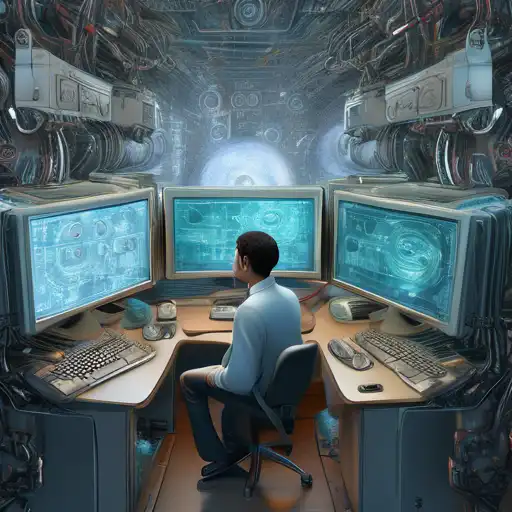Introduction to Computer Vision
Computer vision is a field of artificial intelligence that trains computers to interpret and understand the visual world. By leveraging digital images from cameras and videos and deep learning models, machines can accurately identify and classify objects — and then react to what they "see."
How Computer Vision Works
At its core, computer vision involves the automatic extraction, analysis, and understanding of useful information from a single image or a sequence of images. It involves the development of a theoretical and algorithmic basis to achieve automatic visual understanding.
Key Components of Computer Vision
- Image Acquisition: This is the first step where the system captures an image or a video.
- Pre-processing: The image is then processed to improve the quality of the image for further analysis.
- Feature Extraction: Important features are extracted from the image to help in the identification of objects.
- Detection/Segmentation: The system then detects or segments parts of the image to focus on specific objects.
- High-level Processing: The final step involves understanding the image and making decisions based on the analysis.
Applications of Computer Vision
Computer vision has a wide range of applications across various industries. Here are some of the most common applications:
- Healthcare: From detecting tumors in radiology images to assisting in surgeries, computer vision is revolutionizing healthcare.
- Automotive: Self-driving cars use computer vision to understand their surroundings and navigate safely.
- Retail: Automated checkout systems and inventory management are some of the ways retail is benefiting from computer vision.
- Security: Facial recognition and surveillance systems are enhancing security measures worldwide.
Challenges in Computer Vision
Despite its advancements, computer vision faces several challenges. These include the need for large amounts of training data, the complexity of understanding context, and the difficulty in replicating the human eye's precision. However, ongoing research and development in artificial intelligence and machine learning are addressing these challenges.
The Future of Computer Vision
The future of computer vision is incredibly promising, with advancements in AI and machine learning paving the way for more sophisticated and accurate systems. As technology evolves, we can expect computer vision to become even more integrated into our daily lives, transforming industries and enhancing human capabilities.
For those interested in diving deeper into the world of AI and its applications, exploring deep learning and image processing can provide valuable insights into how computer vision is shaping the future.
